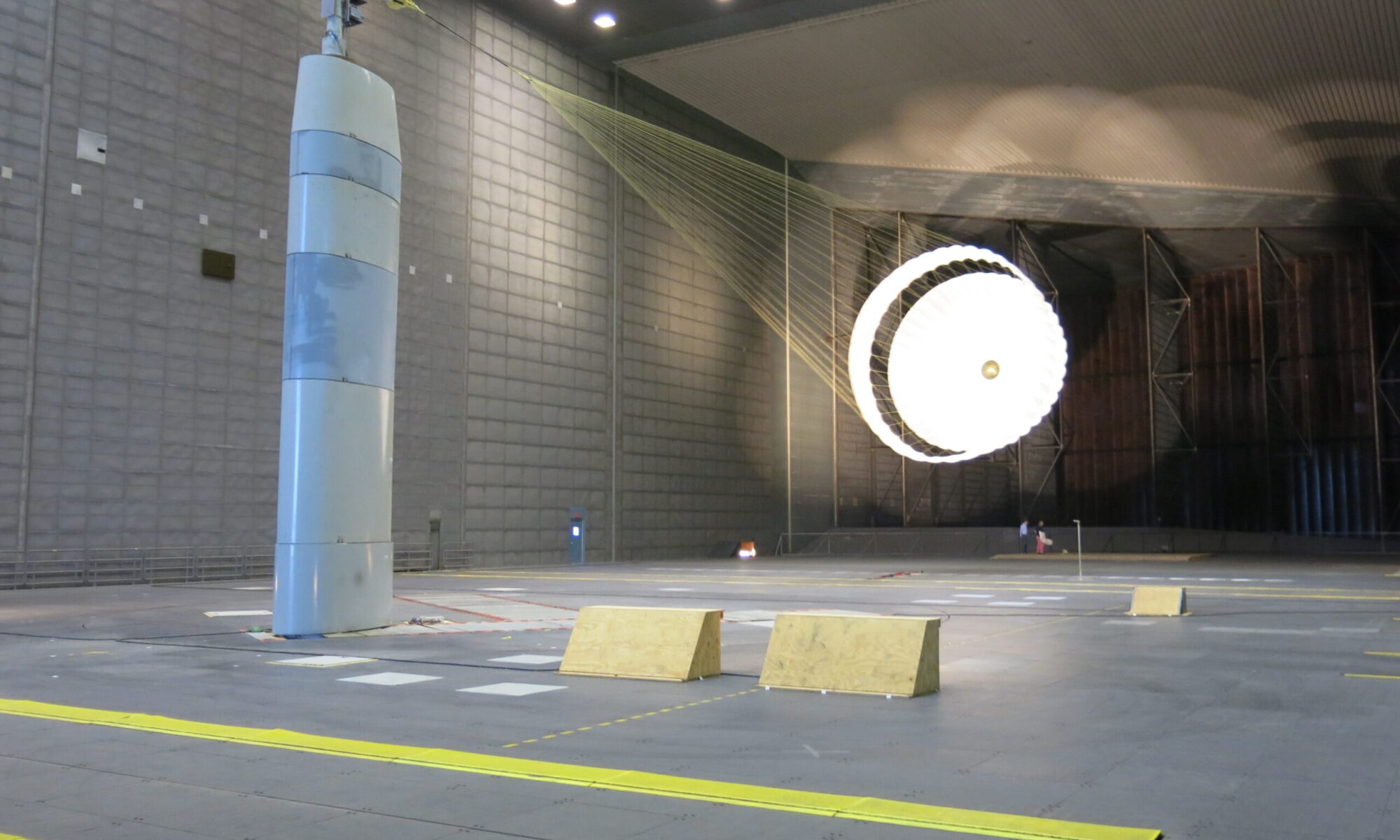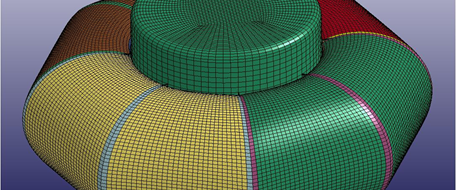The Mars Robotic Exploration Preparation (MREP) is an ESA programme to prepare Europe’s future contribution to the international exploration of Mars. The general approach is to consider a Mars Sample Return (MSR) mission as a long-term objective, and progress towards that goal through short and medium-term technology developments. As part of the overall MREP programme, key technologies are identified and projects put in place to reach Technology Readiness Level (TRL) 5. The Airbags for Small Landers (ABSL) project has the objectives to study, trade and design an airbag landing system for a small lander for a Mars Network Science type mission. The lander will descend under parachute before being decelerated by retro-rockets to zero vertical velocity a short distance above the ground. The lander, protected by its airbag system, will then freefall to the ground.
The airbag landing system is required to protect the lander during impact with the ground at vertical velocities up to 15 m/s and horizontal velocities up to 10 m/s. Local slopes and a rock distribution based on the Viking 1 landing site have to be considered. The airbag system and associated subsystems are required to operate down to -83°C, while remaining compatible with Dry Heat Microbial Reduction (DHMR) sterilisation procedures at temperatures of 125°C. Finally, the airbag system is required to stow or clear the landing site following completion of landing in order to allow the lander to open and commence the surface mission, including the deployment of a seismometer beside the lander.
For the Airbag design activity, Vorticity, in partnership with TNO-CGG Technologies, Airborne Systems and the University of Leeds, has performed a number of tasks leading to a design and development plan for an airbag system capable of meeting the requirements of the mission.
Initial tasks focused on developing and refining a specification for the airbag system and performing a comprehensive review of previous terrestrial and extra-terrestrial airbag landing systems to capture the state of the art in airbag system design. Airborne Systems provided valuable input on state of the art terrestrial airbag landing systems, based on their previous work on UAS and the Orion Crew Module airbag systems. Following successful completion of these tasks, a trade study was conducted to evaluate and trade off different airbag system solutions, leading to two candidate solutions to take forward to detailed design. Areas considered in the trade included:
- Vented and Non-Vented airbags
- Airbag topology and number of segments
- Lander interfaces
- Sensing and control
- Inflation systems
- Airbag materials
- Landing site clearance
TNO-CGG Technologies performed the inflation system trade study, evaluating and trading pyrotechnic, stored gas and the revolutionary Cool Gas Generator system to select the optimum solution for the airbag inflator. At the end of the trade, a non-vented double torus airbag system similar to the design developed during the Mercury Landing Technologies programme, and a vented toroidal design similar to the ADLT and ExoMars vented airbag systems were selected.
Parallel to this task, definition and planning of an airbag material test programme was commenced with the objective of defining a performing test to characterize the performance of airbag envelope materials under representative loading conditions. With their extensive experience of textile performance and testing, the University of Leeds provided support to Vorticity in this activity.
Following selection of the two candidate solutions, detailed design was commenced. During detailed design, sizing and assessment of the performance of the two designs were performed using a combination of LS-DYNA and an in-house Monte Carlo landing simulation tool to provide an assessment of the overall probability of success given the landing conditions defined in the specification. Through the course of several iterations, designs for a non-vented and a vented airbag system compatible with the performance requirements were derived. Material stressing, component definitions, detailed mass models and CAD models of the airbag system components and full assembly were all produced. TNO-CGG Technologies undertook the design of two Cool Gas Generators to meet the different requirements of the vented and the non-vented airbag designs.
Alongside the detailed design, the University of Leeds conducted the material test programme with samples of a polyurethane coated Kevlar material used for the terrestrial airbag landing systems and samples of the silicone coated Vectran material produced for the ExoMars programme being tested. Airborne Systems provided the Kevlar material for the test programme and manufactured the novel test articles for the biaxial tension, torsion and puncture. Standard uniaxial, tear and abrasion tests were performed, alongside novel biaxial tension and torsion tests. Puncture testing of inflatable test articles of the two material was also performed to investigate the tolerance of the material to penetration and provide vital data to extend simulation prediction of rock damage.
In the final phase of the project, design and development plans for the airbag systems were prepared to progress the state of European airbag landing systems to flight readiness.


